There are nearly 7,000 distinct languages spoken in the world today and many of them trace their roots to the ancient languages on this list.
While some of the languages on this list aren’t used in everyday life, all of them are still spoken to a certain extent today.
Since it is difficult to pinpoint when exactly a language emerged, the dates used come from the oldest known written examples of these languages.
10. Arabic
Date of Oldest Known Example: c.1st century CE
Country/Region of Origin: Arabian Peninsula
Current Number of Native Speakers: 580 million across all varieties of Arabic
 photo source: Wikimedia Commons
photo source: Wikimedia Commons
Although, Arabic does not have a millennia long history, it is one of the most spoken languages in the world. About 310 million people worldwide speak Arabic as a native language and an additional 270 million people fluently speak Arabic as a second language.
Did You Know?
Since Arabic emerged much later than the other languages on this list, it was influenced by some of these languages, including Aramaic, Hellenistic Greek, Hebrew, and Persian.
9. Tamil
Date of Oldest Known Example: c.300 BCE
Country/Region of Origin: South India
Current Number of Native Speakers: 75 million
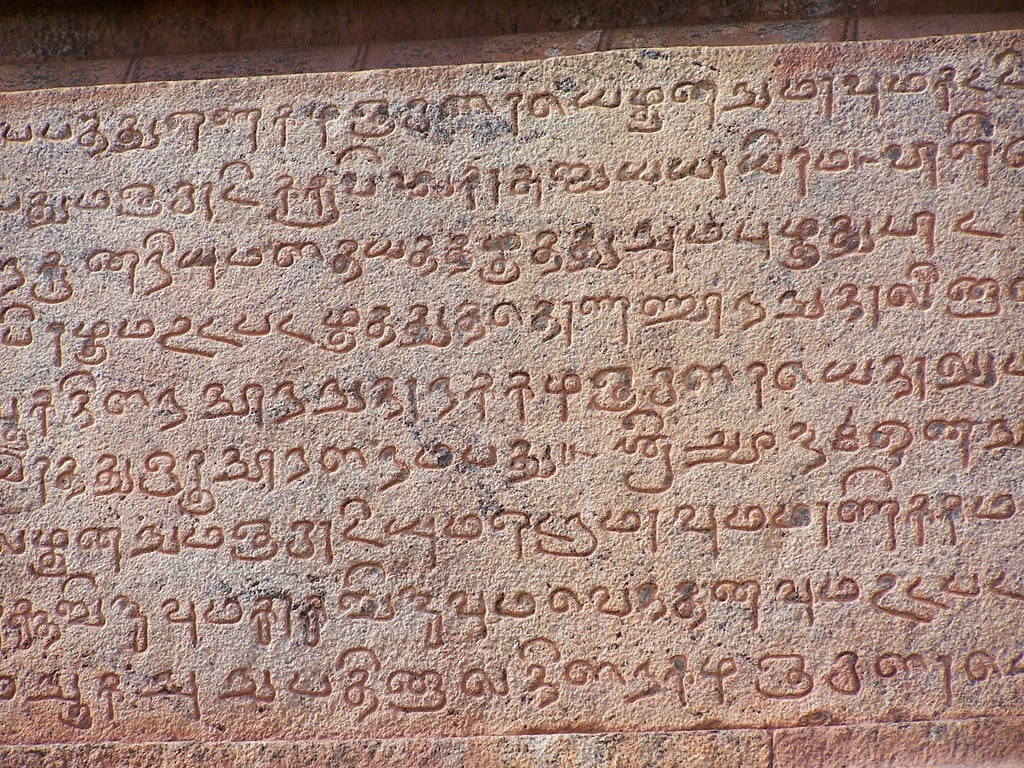 photo source: Wikimedia Commons
photo source: Wikimedia Commons
Tamil is the oldest attested non-Sanskrit language native to India, with the earliest known records of the language dating to around 300 BCE. Just like many of the languages on this list, these early Tamil inscriptions were found in caves and on pottery. The oldest piece of Tamil literature is the Tolkāppiyam from the 1st century BCE.
In addition to the Tolkāppiyam, nearly 3,000 pieces poems written in Old Tamil have been discovered. Old Tamil eventually evolved into modern Tamil and is still spoken by about 75 million people. Tamil is also the official language of Sri Lanka, Singapore, and the Indian state of Tamil Nadu.
Did You Know?
According to Hindu legend, Tamil was created by Lord Shiva in the personified form of Tamil Thāi (Mother Tamil).
8. Persian (Fasi)
Date of Oldest Known Example: c.525 BCE
Country/Region of Origin: Ancient Iran
Current Number of Native Speakers: 70 million (110 million worldwide)
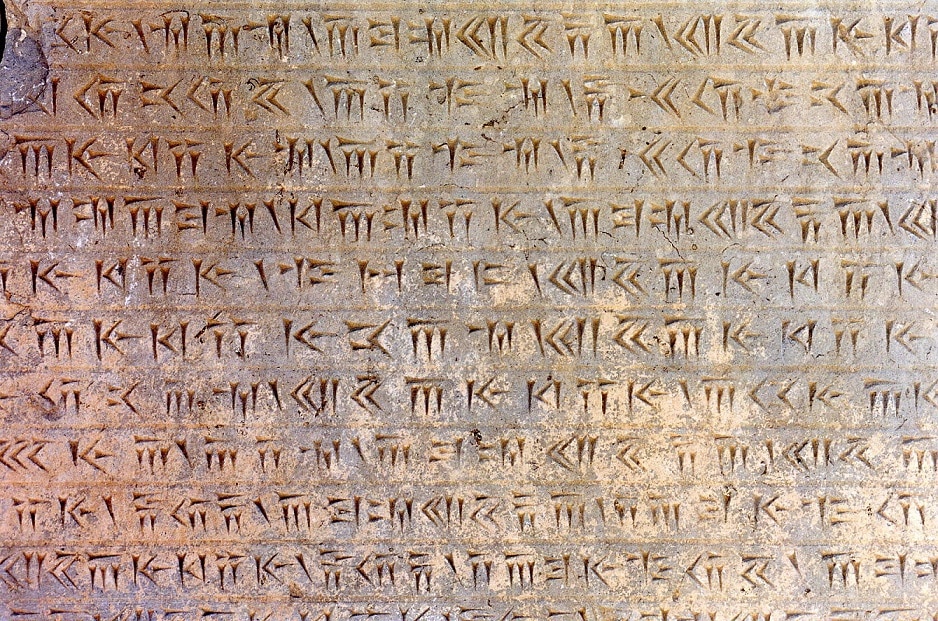 photo source: Wikimedia Commons
photo source: Wikimedia Commons
Persian, or as its known today Farsi, originated in Ancient Iran and the history of the language is broken down into three periods: Old Persian (c.525 BCE – 300 BCE), Middle Persian (300 BCE – 800 CE), and Modern Persian (since 800 CE).
Some of the earliest examples of Old Persian inscriptions date to around 600 BCE, but the most important example of early Persian writing is the Behistun Inscription, which is dated to c.525 BCE.
Today, Persian is still a widely used language and is spoken by an estimated 110 million people worldwide. Persian is the official language of Iran, Afghanistan, and Tajikistan. Like many of the old languages on this list, Persian influenced the languages of neighboring regions, including Armenian, Georgian, and Urdu.
Did You Know?
Persian has a long literary history and some of the most famous Persian works are Shahnameh of Ferdowsi, the works of Rumi, the Rubaiyat of Omar Khayyam, and the Panj Ganj of Nizami Ganjavi.
7. Latin
Date of Oldest Known Example: c.7th century BCE
Country/Region of Origin: Latium (area near modern-day Rome)
Current Number of Native Speakers: Unspecified – not regularly spoken, but still used by the Catholic Church, military organizations, state and country mottos, the scientific community, academia, and other institutions
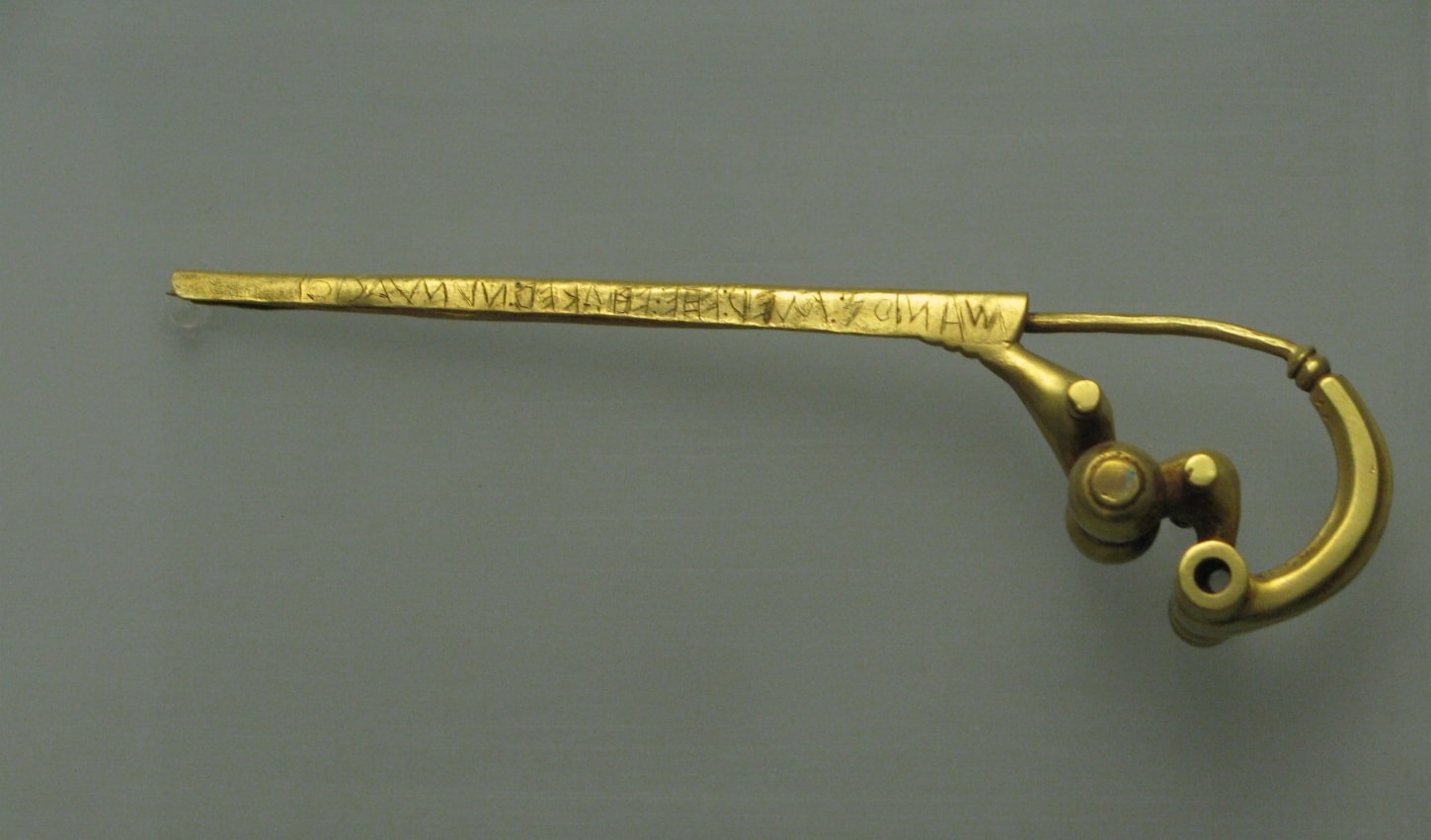 photo source: Wikimedia Commons
photo source: Wikimedia Commons
Many people call Latin a dead language, and while this is technically true, its still used by many organizations and is even taught in school. People may not regularly speak Latin, but its common enough that most people know a few phrases. The oldest known Latin inscription dates back to around the 7th century BCE.
Latin originated in the area that is now Rome and it became a dominant language as the Roman Republic spread its power. Eventually, Latin spread all the way to the western Roman Empire.
While Latin itself, is no longer a common language, Vulgar Latin or Colloquial Latin developed into the Romance languages: Italian, French, Portuguese, Romanian, and Spanish. English also has many words with Latin roots.
Did You Know?
Although no one fluently speaks Latin anymore, due to its history, it is still the official language of the Holy See and the Roman Rite of the Catholic Church.
6. Hebrew
Date of Oldest Known Example: c.10th century BCE
Country/Region of Origin: Israel
Current Number of Native Speakers: 5 million; 9 million total speakers (including non-native speakers)
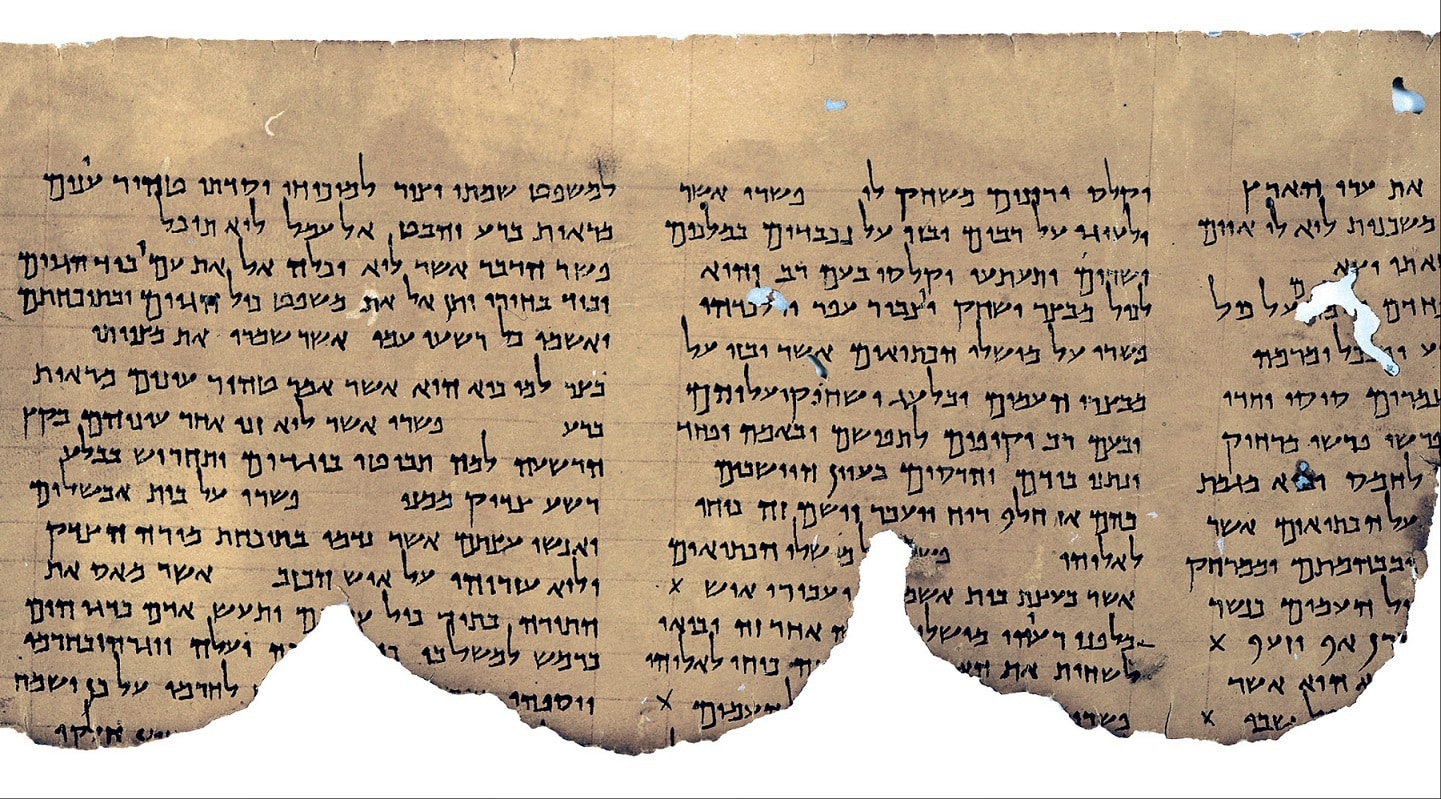 photo source: Wikimedia Commons
photo source: Wikimedia Commons
While there are few languages that have older roots, Hebrew is often cited as the oldest spoken language in the world. This is due to Hebrew’s connection to biblical texts. However, unlike the other languages on this list, Hebrew went almost completely extinct for a few centuries before being revived.
Between 200 and 400 CE, Hebrew had stopped being an everyday language, but was still used as the language of Jewish liturgy, rabbinic literature, intra-Jewish commerce, and poetry. Then in the 19th century, Jewish activist Eliezer Ben-Yehuda, began reviving Jewish as a spoken language. The movement worked and Hebrew was declared the official language of the State of Israel in 1948.
Did You Know?
The Hebrew alphabet has no vowels, all 22 letters are consonants.
5. Aramaic
Date of Oldest Known Example: c.1100 BCE
Country/Region of Origin: Ancient Aram (modern-day Syria)
Current Number of Native Speakers: 1 million to 2 million
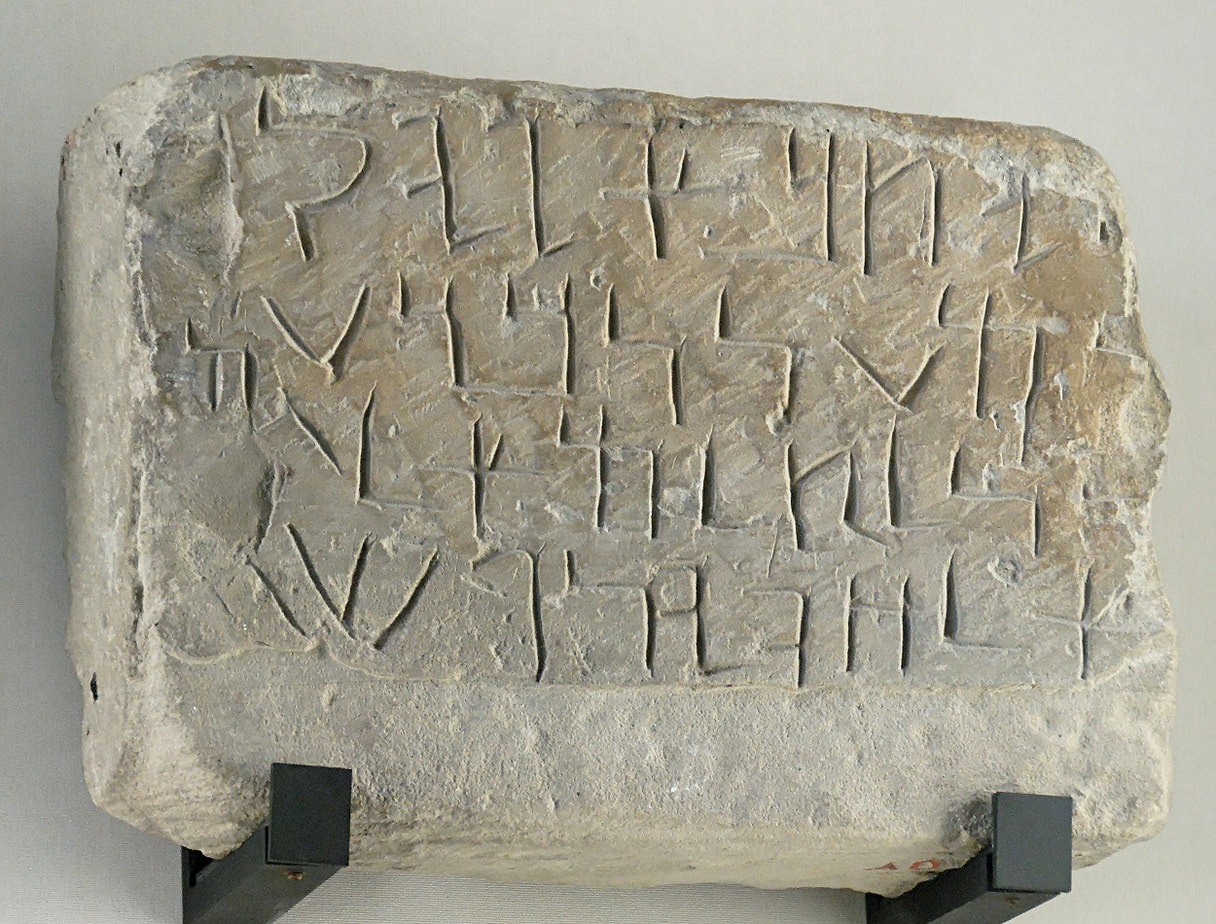 photo source: Wikimedia Commons
photo source: Wikimedia Commons
Due to the large number of Arameans settling in Babylonia and Assyria (modern-day northern Iraq, northeast Syria, northwest Iran, and south eastern Turkey), the Neo- Assyrian Empire began using an Imperial Aramaic as the common language of its empire.
Today, there are many different dialects of Aramaic, known as Neo-Aramaic languages. Like most of the languages on this list, modern Aramaic is very different than it was in the past.
Did You Know?
The famous Dead Sea Scrolls were written in the Jewish version of Aramaic.
4. Chinese
Date of Oldest Known Example: c.1250 BCE
Country/Region of Origin: China
Current Number of Native Speakers: 1.3 billion (about 16% of the world’s population)
 photo source: Wikimedia Commons
photo source: Wikimedia Commons
Today, there are many different dialects of the Chinese language, but all of them trace their roots to Archaic Chinese, which dates to over 3,000 years ago. The first written records of Chinese language come from the Shang Dynasty and this early writing system is known as Oracle Bone Script. As its name implies, the writing appeared on oracle bones, which were used for pyromantic divination.
Modern Chinese script is directly descended from Oracle Bone Script, making Chinese one of the oldest attested living languages in the world. Due to the vastness of China, its people have always spoken different regional dialects. However, Standard Chinese, or Mandarin, is the official language of China.
Did You Know?
The Chinese language consists of hundreds of dialects, but they are classified into a few main dialect groups: Mandarin, Wu, Gan, Xiang, Min, Hakka, Yue, Jin, Huizhou, and Pinghua.
3. Sanskrit
Date of Oldest Known Example: c.1500 BCE
Country/Region of Origin: Ancient India
Current Number of Native Speakers: about 24,821 (about 1,196,223 as a third language)
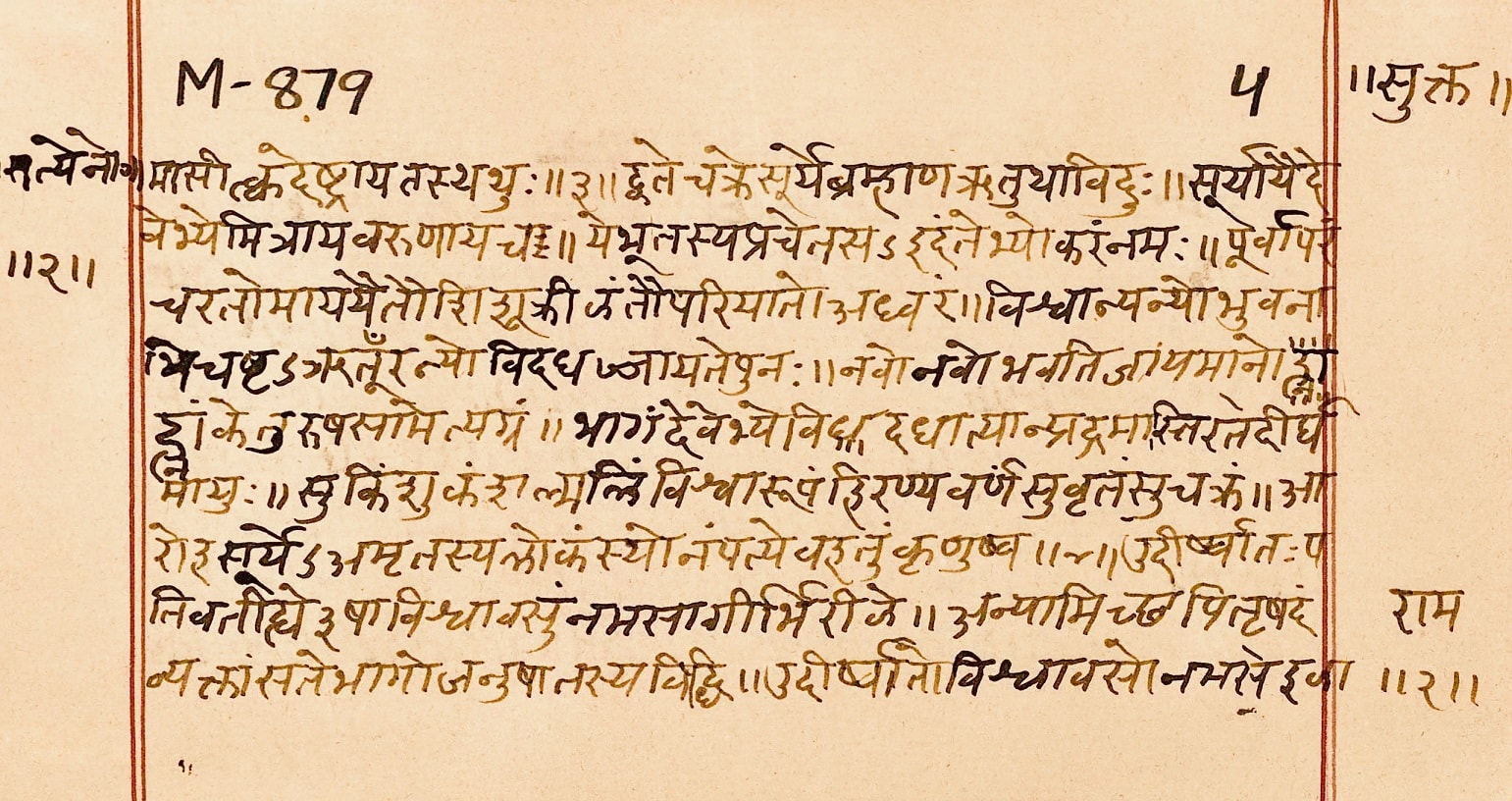 photo source: Wikimedia Commons
photo source: Wikimedia Commons
Sanskrit is an ancient language that traces its roots to over 3,500 years ago in Ancient India. The oldest known form of Sankrit is Vedic Sanskrit and comes from the Rigveda, an important ancient Indian text that is still one of the sacred canonical texts of Hinduism. While no one knows for sure when the Rigveda was written, the oldest parts of the collection have been dated to around 1500 BCE.
Vedic Sanskrit gave way to Classical Sanskrit, which was more refined and had a standardized grammatical structure. Not many people today regularly speak Sanskrit, but nearly 25,000 people list the language as their mother tongue. Sanskrit is still used used as a ceremonial and ritual language in Hinduism and some Buddhist practices such as hymns and chants.
Did You Know?
Sanskrit is the root of many Prakrit languages, such as Hindi, Marathi, Bengali, Punjabi, and Nepali.
2. Greek
Date of Oldest Known Example: c.16th century BCE
Country/Region of Origin: Greece (specifically Crete and Cyprus)
Current Number of Native Speakers: 13.5 million
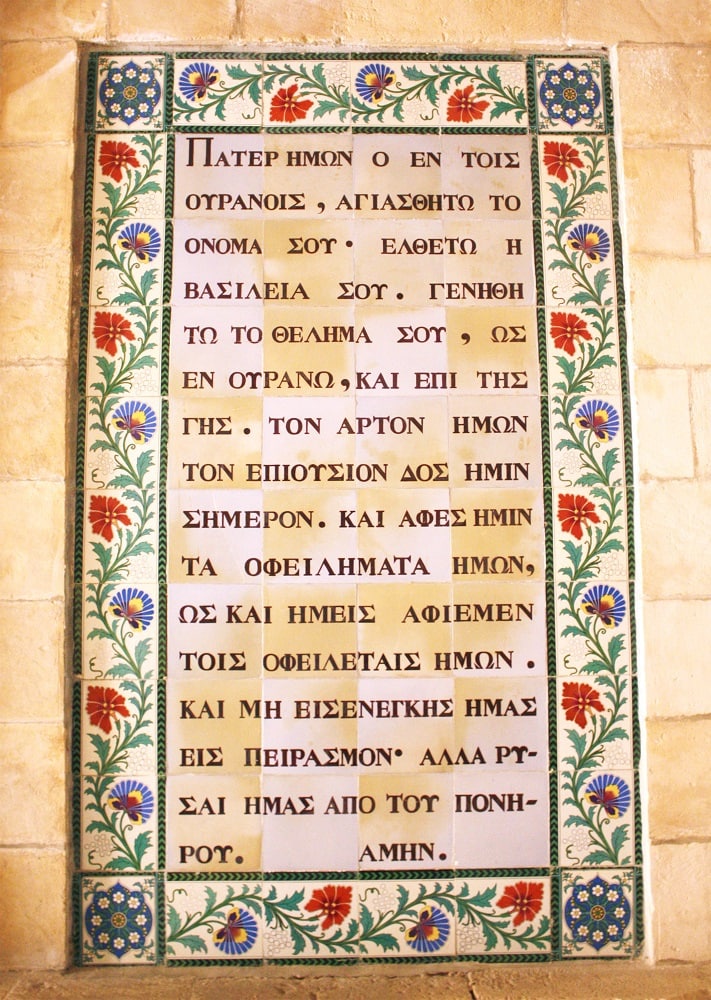 photo source: Wikimedia Commons
photo source: Wikimedia Commons
Greek is the oldest attested living Indo-European language and dates back to at least the 16th century BCE. While the earliest known records of the Greek language date to around the 16th century BCE, historians believe that the people of the Balkan peninsula have been speaking Greek since the 3rd millennium BCE or possibly earlier.
However, any texts from around this time have not been deciphered so the earliest definitive proof of the Greek language only dates to around the 16th century BCE.
The oldest known form of the Greek language is Mycenaean Greek, which was spoken on Crete and Cyprus.
Not only is the Greek language one of the oldest, but its also one of the most important languages in history because many languages have words with Greek roots.
Did You Know?
Greek has been used for so long that, along with Latin, it is the main source of international scientific vocabulary.
1. Egyptian (Coptic)
Date of Oldest Known Example: c.2690 BCE
Country/Region of Origin: Egypt
Current Number of Native Speakers: Unknown – only used today as a liturgical language by the Coptic Orthodox Church of Alexandria and the Coptic Catholic Church
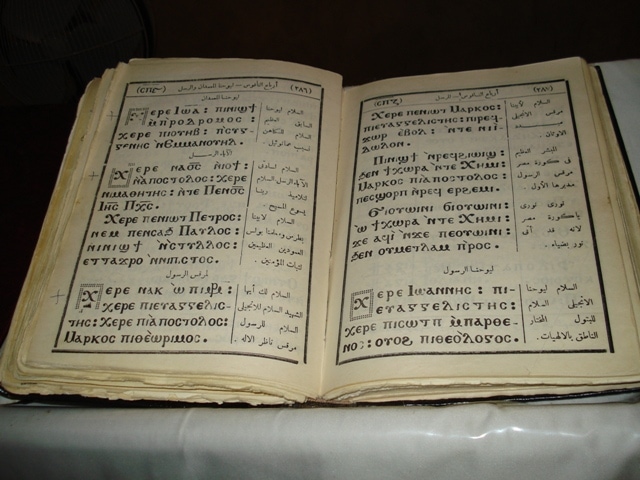 photo source: Wikimedia Commons
photo source: Wikimedia Commons
While modern Egyptians speak Arabic today, Coptic – the current form of the Egyptian language — is still used as a liturgical language by the Coptic Church. Like any language with ancient roots, today’s Coptic is not the same as Archaic Egyptian. However, since Coptic is the direct descendant of Archaic Egyptian, it is the oldest spoken language in the world.
The earliest known complete sentence in Egyptian dates to around 2690 BCE and Egyptian hieroglyphs from tombs date back even further to 3200 BCE. Archaic Egyptian transformed into Middle Egyptian, which then evolved into Demotic and finally Coptic. Egyptians spoke Coptic regularly until about the 17th century when it fell out of favor and was replaced by Arabic.
Did You Know?
Although the Egyptian language is known for its hieroglyphs, the Coptic alphabet was actually derived from the Greek alphabet.
OTHER POSTS YOU MAY BE INTERESTED IN


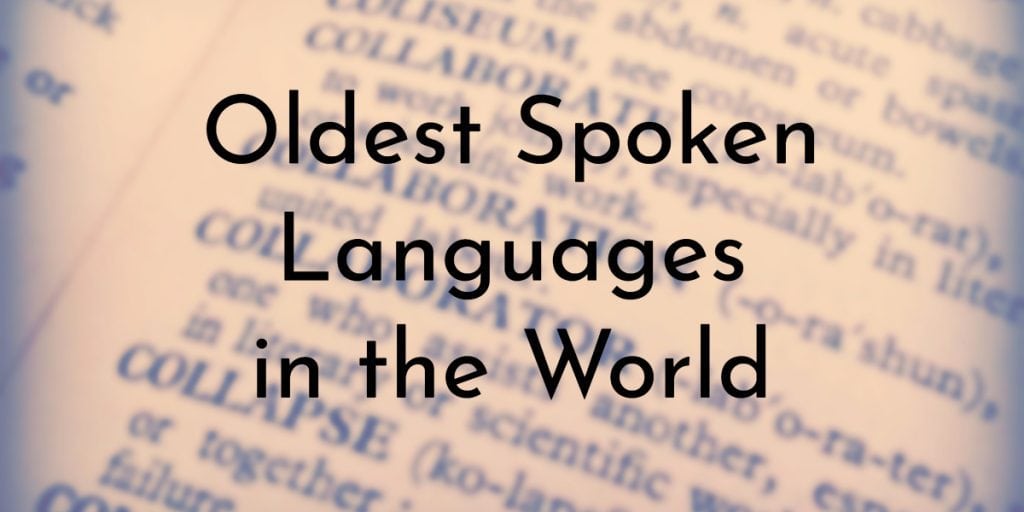

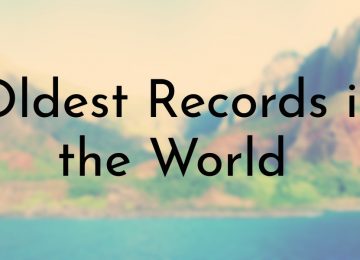


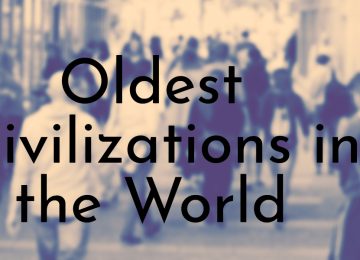




Why do you make no mention of Aramaic? Its history stretches as far as Hebrew, further than Persian and Arabic, and has been continuously used up to today.